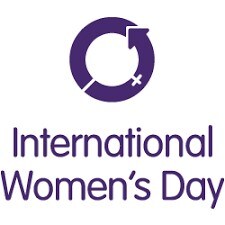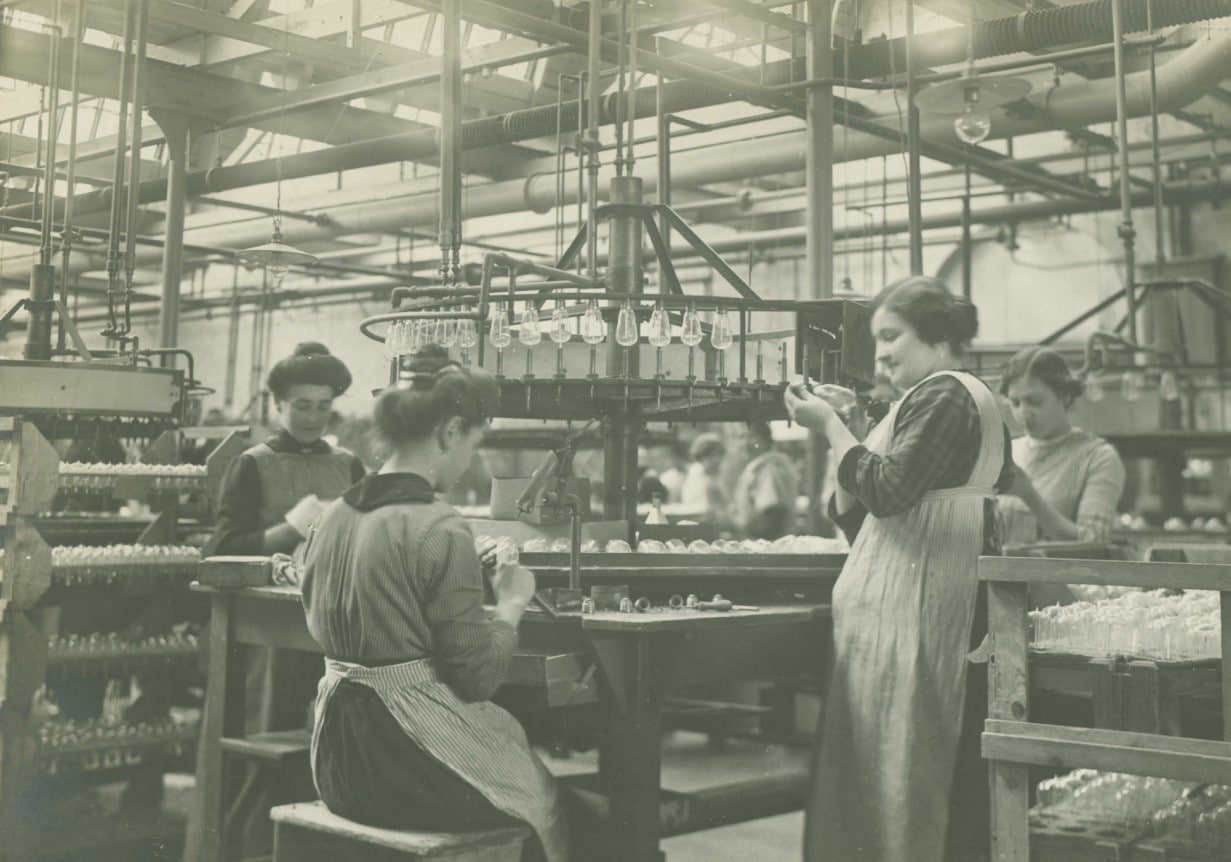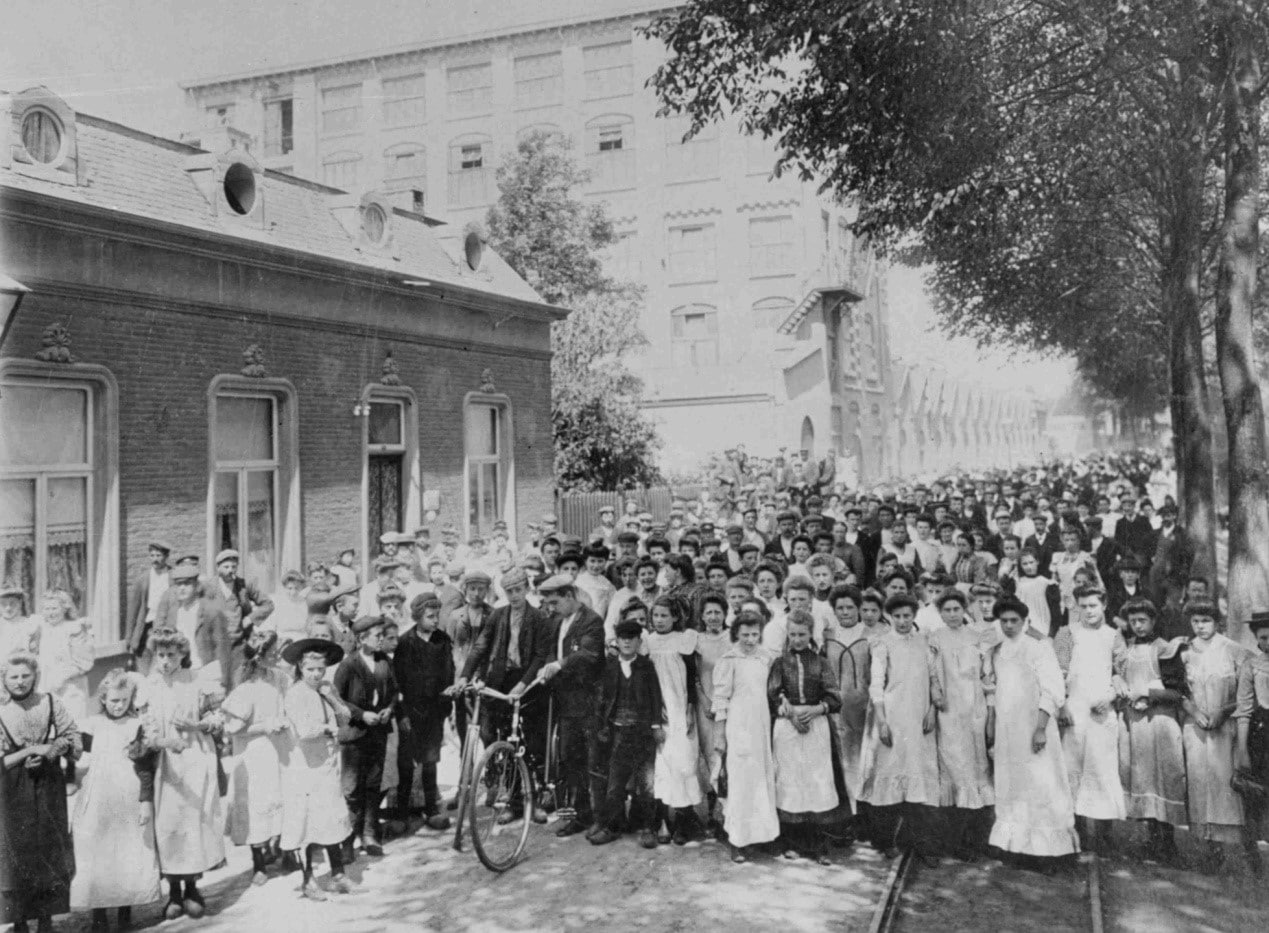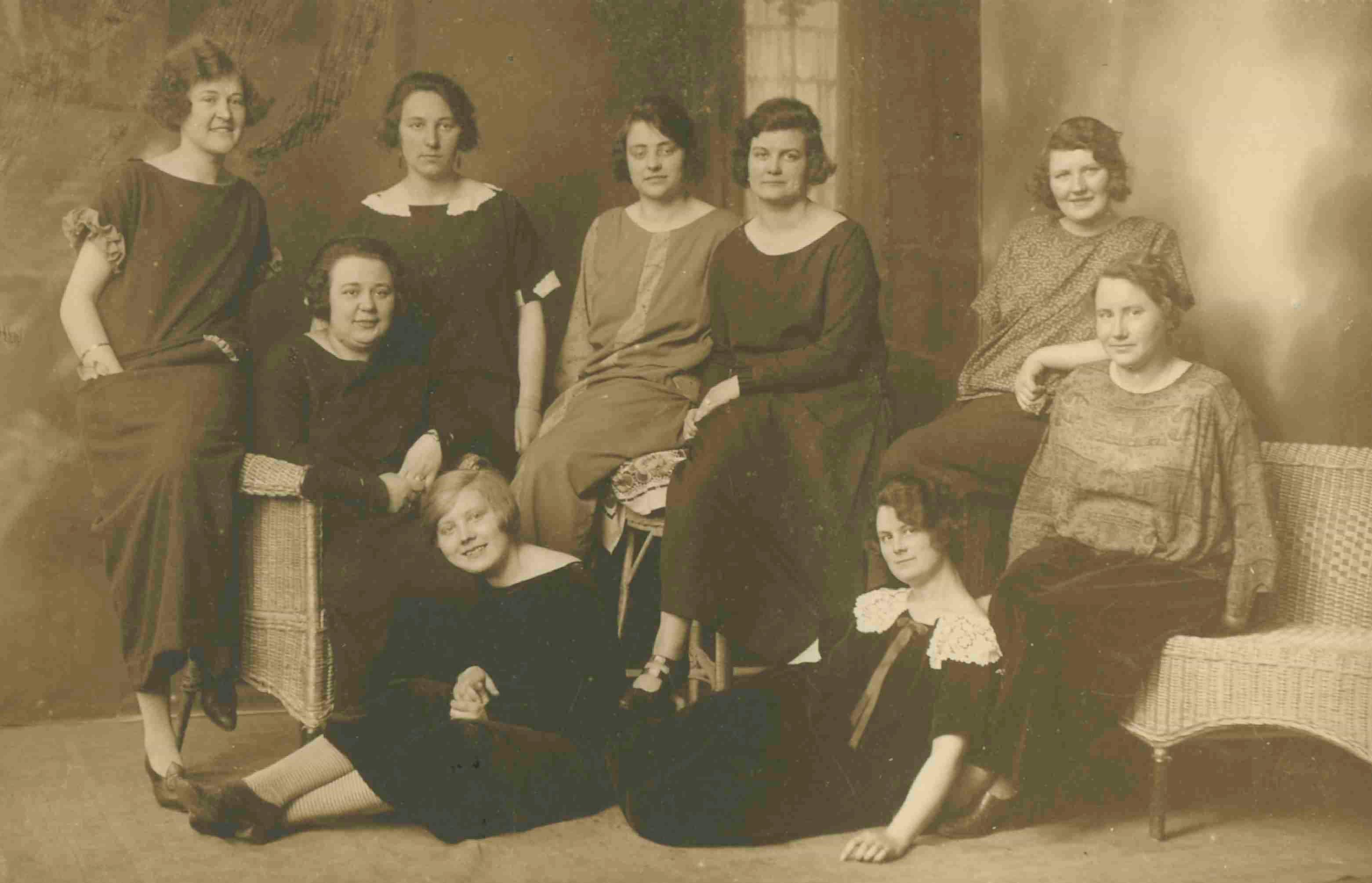From lamp girls to senior executives:
Philips celebrates International Women’s Day!
Philips has a lot to thank women for. From the young ‘lamp girls’ to the thousands of women who have helped to shape and grow the organization in recent decades. And the company continues to promote women to help them reach the top. As part of International Women’s Day we are looking back at the past and the stories of the very first ‘lamp girls’. We also take a look at our current activities and ambitions with regard to diversity.

There may not seem to be much of a link, but there really is. The women who worked on the factory floor at the start of the twentieth century have a lot in common with the women we find working at every level and in every role at Philips today. Ever since the company was founded in 1891, Philips has been striving to create an inclusive work environment. There has been a major drive to recognize and develop female talent since the 1990s, but in the decades prior to that there were also women who grabbed the opportunities they were given and really made the most of them. Take Trijntje Naber, for example, who was appointed Deputy Director immediately after the Second World War. And, as one of only a handful of organizations to have a department for married women so they didn’t have to stop working, Philips now runs special leadership programs to help women make it all the way to the top.
‘Lamp girls’

Amazing women have been working at our company ever since 1891. The ‘lamp girls’ were the first employees and they formed the backbone of the organization. In the factories they performed a whole host of tasks, from plaster work to wire cutting and from soldering to sorting and winding. Their hands were small and slender, enabling them to easily position the delicate filaments inside a glass bulb. Work was tough in those days. The women worked a 60-hour week, starting at seven o’clock in the morning, and they often didn’t finish until seven o’clock in the evening. When the Russians placed an order for fifty thousand incandescent lamps in 1898, these women didn’t get to bed until after eleven o’clock at night, and they had to be back at work again by seven o’clock the next morning. Despite this, they enjoyed their work, and Philips looked after its employees well. The girls had a lot of fun together and Philips paid its female employees a respectable wage. Some girls even earned more than their fathers did! And some were given amazing opportunities within the company, like Trijntje Naber, who managed to make it from secretary to deputy director.

Married. And what then? There was considerable social pressure in the predominantly catholic south of the country. Factory work was associated with loose morals, and the church was determined to prevent that. Women and men did, however, work in separate parts of the factories, partly because they performed different tasks. There were quite a lot of couples who first met at Philips. Right up until the late 1960s it was normal for women to leave the company – or even to be made redundant – once they got married. At this time Philips set up special departments for married women in some of its factories. There was a shortage on the labor market and married women were welcomed with open arms. This was very fortunate for those women who did not want to have to stop working. The wife of… The women at Philips didn’t only work in the factories for light bulbs, radio tubes and radios, some of them had office jobs. For example, women with an advanced secondary education qualification worked as secretaries, as correspondents, in administrative roles or in the sales department. The wives of Philips founders Gerard and Anton Philips were also closely involved in the company, for example as serious discussion partners in business decisions, but they were also independently active in social initiatives. Johanna Philips-Van der Willigen and her husband Gerard set up a study fund, the Philips-Van der Willigen fund, for example, which enabled tens of thousands of employees’ children to undertake further education. And Anna Philips–de Jongh, Anton Philips’ wife, held a prominent position within the Philips community for over seventy years. More women at the top It’s now 2021 and nearly a quarter of senior managers at Philips are women. That’s great, but we can still do better. With its many programs to promote diversity and inclusion, Philips is confident that within a few years at least thirty percent of leadership roles will be held by women. Philips is also striving to create an inclusive work environment where people can perform at their best, simply because they are allowed to be themselves.

Who was Trijntje Naber? In the 1940s it was quite unusual for a woman to become a deputy director, but that’s precisely what Trijntje Naber managed to do. After leaving secondary school, at the age of sixteen she started work at Philips as a secretary. Trijntje really stood out, not just because she was hard working and ambitious but also because there was very little she didn’t know about incandescent lamps. Trijntje very quickly won Anton Philips’ trust and during the Second World War she resided with the senior management in New York. It was hard for her to leave her family behind, but she always seemed to find a way to get small gifts and letters smuggled to her family back home. After the war she was appointed deputy director of Philips Lighting, a role she performed until she passed away two years later. In her obituary she was praised for her clear vision, her incredible work ethic and her ability to find quick and intuitive solutions for complex situations. And, remarkably, the obituary stated that her zest for life and decisiveness ‘would be the envy of many a man’!

Women in the Sales Department, with Trijntje Naber on the right (1916)
Three lamp girls tell their story Janneke van Buul: ‘As one of the first girls to work at Philips, I used to clean the factory before the manufacturing work began. We earned 2.5 cents per hour. It wasn’t much, but Mr Philips didn’t make a lot of money at that time either. Sometimes we could tell that the company wasn’t doing very well. We all felt involved somehow. And when things started to improve again Mr Philips would tell us in person. It was as if we were his equals. He was a nice man and he worked hard. Sometimes his hands were black as soot because he’d been working with carbon filaments. Our department was full of young girls, so we had a lot of laughs, it was really good fun.’ (interview 1966) (interview 1966) Antonetta Mansvelders: ‘During my childhood there was a lot of extreme poverty. My father was unemployed in the winter months and we children were sent off into the woods to cut dry branches from the pine trees. We tied them into bunches and sold them for five cents each. It’s no wonder my parents were over the moon when I got a job at Philips. Those few cents were a great help. A lot changed when Anton Philips suddenly sold fifty thousand incandescent lamps in one go. I was used to working in the old factory, but after that big order we had to work whole days in a new factory building: from seven to nine, and on some days even until eleven – eleven at night, you realize.’ (interview 1966) Anna van de Pol: ‘We started work at seven in the morning and when things were busy we even started as early as six. There were thirty-two girls and we sat working at four tables. We passed the time by working, praying and singing. Mr Gerard used to say: ‘Sing it again!’. Gerard and Anton were good people. Once the company started to do better they also paid us well. That’s how I earned the money to buy my first pair of shoes. By the time I left Philips, I was earning sixteen Dutch guilders. My father, who worked elsewhere, was only earning eight.’ (interview 1966)

